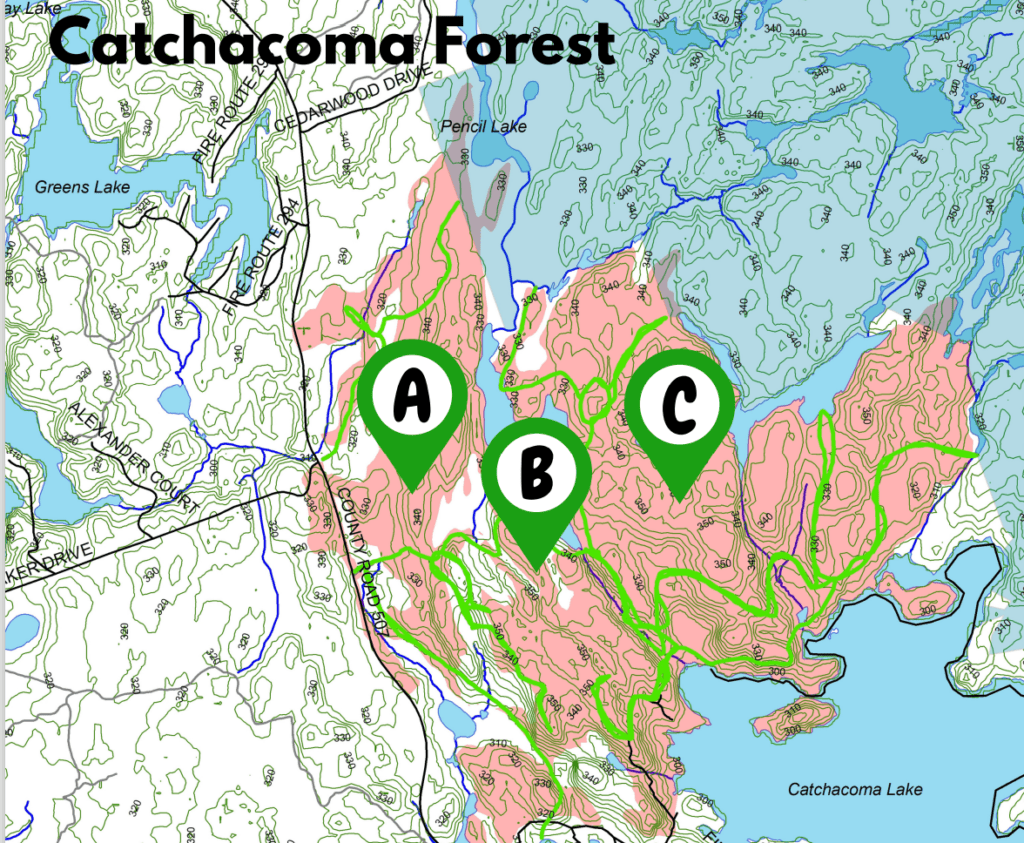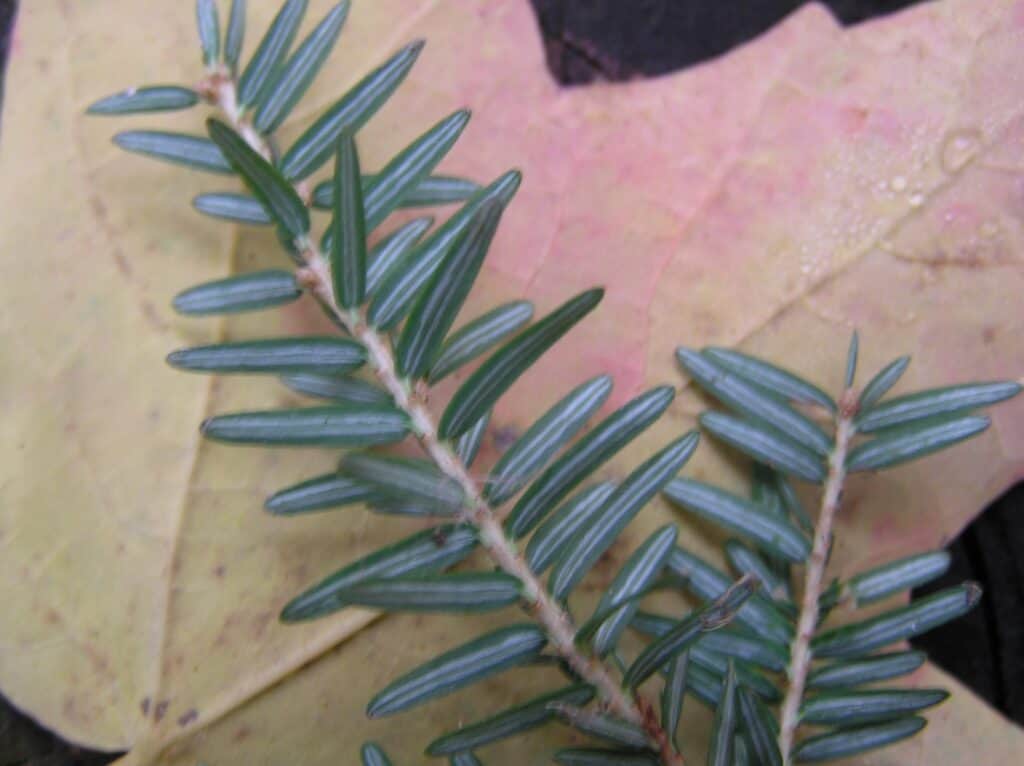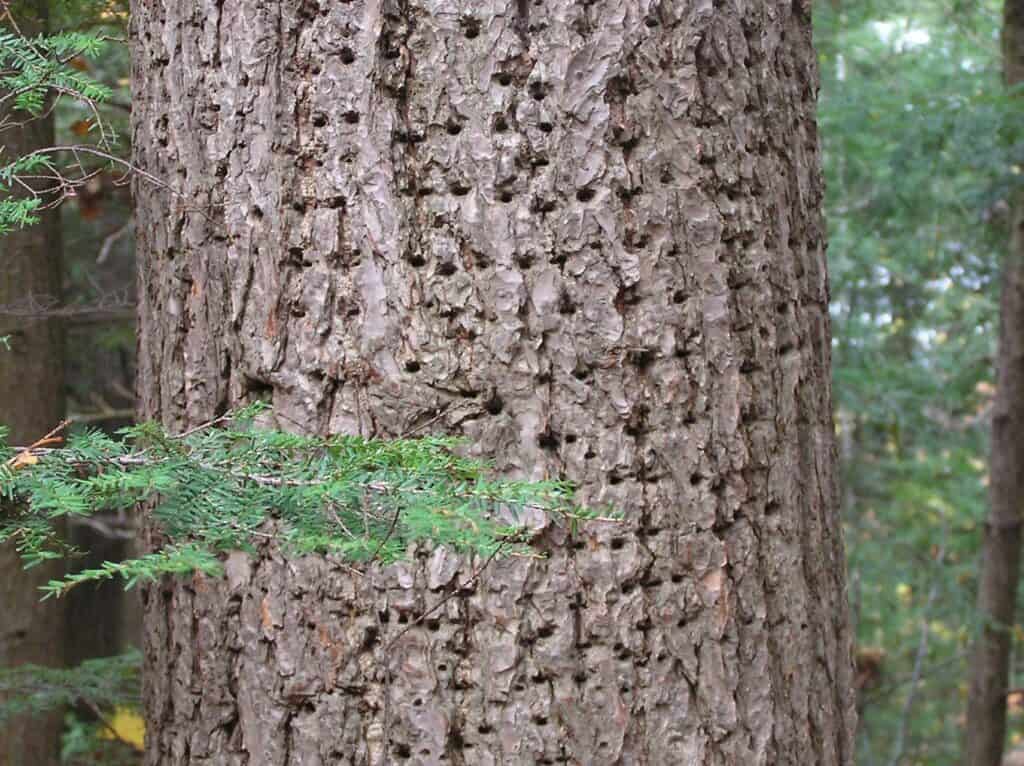Peterborough Examiner – June 4, 2021 – by Katie Krelove, Ontario Campaigner for the Wilderness Committee and member of the Catchacoma Forest Stewardship Committee
The clock is ticking: May 17 the last day to comment on proposed logging plan
By now it’s common knowledge that the pandemic has driven many of us to seek solace, physical activity and places to gather safely in nearby nature. Indeed, the many links between a walk in the woods and human health are hitting home like never before. This is more than just a fuzzy feeling–increasingly, research is demonstrating that time spent amongst trees can boost immune systems, improve our sense of well-being, lower blood pressure and decrease stress, among other health benefits. Nature therapy and forest bathing are more than fads, they are backed by science. In fact, just recently Ontario doctors gained the ability to officially prescribe “time in nature” the same way they prescribe medication. See https://tinyurl.com/efsrmjzh
But in this day and age of urban sprawl, climate crisis, biodiversity loss and pressures from industrial development, the health of natural spaces is just as dependent on the actions of people as we are on them. That is why the Catchacoma Forest Stewardship Committee (CFSC) has been working for the past year and half to advocate for protection for the Catchacoma Forest on public land in northern Peterborough County–ever since it was found to be home to a rare and significant mature and old growth eastern hemlock ecosystem with trees assessed up to 375 yrs. old. The Forest is also leased for logging by the Bancroft Minden Forest Company.


The CFSC protection project has involved hundreds of hours of public outreach and events, additional field studies and participation in the consultation process for the development of the next 10-year logging plan. Despite hundreds of letters and emails of support for our call for a moratorium on logging in the Catchacoma Forest, portions were cut over the past two winters including many trees over 140 years old, which is the onset age of old growth for eastern hemlock. This is one of the longest living species in the province and can live up to 600 years.
A walk in that part of the woods now provides a much less fuzzy feeling–the towering hemlocks and their characteristic shady canopy giving way to large open patches, machinery trails, logging jetsam and debris, and new pathways for invasive species. The logging company insists that this is like “weeding the garden” and that it emulates natural disturbance that is suppressed by humans–such as fires. But it is actually wind that is the prime natural disturbance in Ontario’s shade-tolerant hemlock dominated forests–not fire. In fact, the remaining trees in recently logged areas are now more subject to blowdown due to opening up of the forest canopy by removing large old-growth trees.
The truth is that mature forests such as Catchacoma are perfectly capable of “weeding” themselves. By harvesting trees just as they enter maturity, commercial logging stunts and suppresses the Catchacoma Forest from reaching its full old-growth potential–and sacrifices the benefits that go along with old age. Not least of these is the ability to store and sequester carbon–essential services in the battle to keep climate change under control over the crucial next decade. Current science clearly shows that leaving old-growth forests unlogged is the best way to keep carbon in the bank in the short term–above and beyond young and planted forests.
“A single big tree can add the same amount of carbon to the forest within a year as is contained in an entire mid-sized tree.”
STEPHENSON ET AL
Old-growth forests are also endangered in Ontario. Because of the intense pressure of settlement and industry over the past 150 years, this generation has been largely deprived of the experience of a 200 or 300- year-old hemlock forest. Even the logging company and Ministry of Natural Resources acknowledges the rarity of this type of forest on the landscape (less than .15% in the full Bancroft Minden management region). That is what I think about when I walk through the logged part of the Catchacoma Forest now—about what will be lost to future generations if logging continues.
We propose an alternate vision for the Catchacoma Forest–one in which the rare old-growth potential and associated public values are prioritized over logging of one of the most unprofitable timber species on the market. In this vision, the Catchacoma Forest is managed for recreation, health benefits and the highest ecological integrity, as well as for important research into the structure, function and values of the forest. Low-impact hiking and cross-country skiing trails would be built and maintained providing an easily accessible (40-minute drive from Peterborough) new destination for local tourism. School groups in Peterborough County and surrounding regions would have an accessible and unique local destination for outdoor education. Local Williams Treaty Indigenous communities could take leadership roles in conservation and education.
The CFSC is pursuing this vision by preparing an application for a land-use amendment under MNRF policy to change the status of the Catchacoma Forest from “general use” to “conservation reserve”. But we need time. Right now, the latest draft forest management plan includes continued logging in parts of Catchacoma over the next ten years. Under “normal” times this draft would have been the subject to multiple public meetings where people would have had the chance to ask questions, get them answered in person, raise concerns, and articulate an alternative vision.
All of this has been delayed and modified by Covid restrictions, yet the FMP approval process marches on with final comments required by May 17th. Plan approval is expected by August. The latest CFSC submission reiterates our request for a 10-year moratorium on logging in the Catchacoma Forest, based on not only the numerous conservation values of the Forest, but also to allow time for our land reassessment application to be processed. It’s not that much to ask—there are plenty of second-growth forests in the Bancroft Minden forest region for profitable logging. The continuing drive to cut every last public old-growth forest brings into question the forest industry’s commitment to protecting biodiversity and non-timber values. Old-growth forests like Catchacoma should be set aside for the public—before it is too late.
To submit comments to the Bancroft Minden 10-year Forest Management Plan email Ernie Demuth, Management Forester, MNRF at ernie.demuth@ontario.ca or use the CFSC’s action tool on the wildernesscommittee.org website at https://tinyurl.com/z5s5twnn
Climate Crisis News
ALARM: As Canada strengthens its Paris Agreement targets to a 40% emissions reduction by 2030, critics point to the elephant in the room — the continued expansion of the Canadian oil and gas sector. This is the source of one-quarter of Canada’s emissions. Many experts agree that Canada cannot meet this target without a plan to phase out fossil fuel production and financial support given to this sector. Trudeau needs to be honest about what the future of gas and oil looks like in Canada. For the details, listen to the “What on Earth” podcast with Laura Lynch at https://tinyurl.com/4swapcw5
HOPE: Banks and financial institutions with more than $70 trillion in assets have pledged to cut their greenhouse gas emissions and ensure their investment portfolios align with climate science. In the initiative, chaired by Canadian Mark Carney, 160 companies, including 43 banks from 23 countries, will set targets to cut the carbon content of their assets by 2030, in line with zero emissions by 2050. For details, go to https://tinyurl.com/53hntscj
To see a list of ways YOU can take climate action, go to https://forourgrandchildren.ca/ and click on “This Month’s Action” (speak out on Bill C-12) or “Find Another Action You Can Take Today”





